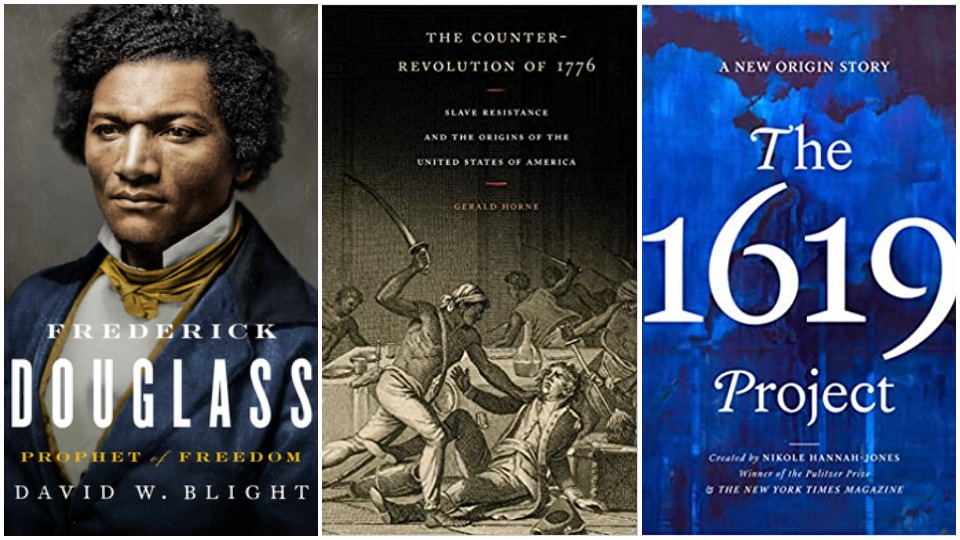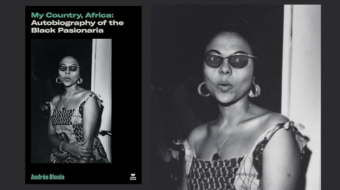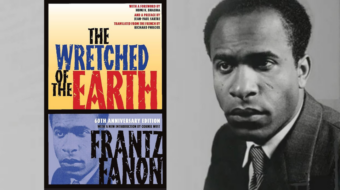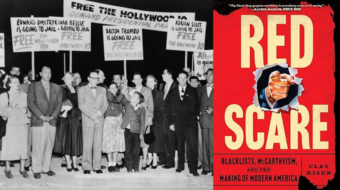
“The past is never dead. It’s not even past.” —William Faulkner (1950)
Let’s consider a trio of books that can be helpful in gaining a deeper understanding of racism, both its practice and its ideological components, including in the current period.
Most current of the three is The 1619 Project: A New Origin Story (2021), created by Nikole Hannah-Jones. It consists of nineteen essays by eighteen different authors. The date signifies when the first enslaved Africans were delivered to Jamestown, Virginia. Most of the essays originally appeared in the New York Times in 2019 to mark 400 years of enslavement and its aftermath.
How slavery, Jim Crow, and their structural legacies reach into the present with devastating consequences are its strongest points. Consider Trymaine Lee’s essay on “Inheritance.” The writer points out that, as of 2017, white households were twice as likely to receive an inheritance than Black households. White families obtain median inheritances of $104,000, Black families just $4,000.
Lee gives examples of the extreme violence that generated this structural legacy. By 1947, Elmore Bolling built a successful farm, transportation business, delivery service, and a gas station in Lowndesboro, Alabama. Much of the farmland had been passed on from his grandfather and father.
These business successes by a Black man proved too much for local white supremacists. Bolling was found shot to death in a ditch. The land and businesses were ripped away from the family. The trauma and consequences for his wife and six children are detailed.
Nikole Hannah-Jones reemphasizes structural racism in her wrap-up essay entitled “Justice.” Given how wealth inheritance was prevented, or minuscule, for African Americans, she points to reparations as the solution long deferred. She explains how a multifaceted reparations program would work.
While it wasn’t the focus of the authors, mostly historians, writing The 1619 Project, an essay on environmental racism, and its interplay with climate change, would have been a welcome addition. The essays “Dispossession” on Native peoples and “Traffic” in Atlanta point in that direction. (Also see The Solutions Project.)
What else is missing in a book that is already 590 pages long? The authors set out to delineate the origins of present-day racism in the long period of chattel slavery, Jim Crow, and up to the 21st century. They do that well. How they handle the theme of class as it mixes with race and racist ideology is where the book falls short.
While it has an essay on “Capitalism,” The 1619 Project whiffs on class-driven explanations of the good data it presents. It writes of the 10% low level of unionization in the U.S. and points to racism as a reason for this. It doesn’t explain how both white and Black workers lose out financially and on the workplace floor, while divided. Nor does it explain how monopoly and financial capital are the sources of that racism. Perhaps these were taboo discussions in the New York Times.
The accomplishments of the Communist Party USA are ignored. Examples include its leadership in the Black and white, unite and fight union and housing fights of the 1930s and ’40s, integration of major league baseball in the 1950s, integration of the popular TV show American Bandstand in 1961, and Angela Davis’s vice-presidential campaigns in the 1980s. The role of anti-communism, alongside racism, as a divider of our class and country, is completely left out.
Counter-Revolution
A book that handles class somewhat better is Dr. Gerald Horne’s The Counter-Revolution of 1776: Slave Resistance and the Origins of the United States of America. Actually, the subtitle of The 1619 Project—“A New Origin Story”—isn’t all that new in one sense: Horne’s origin story was written a full five years earlier (2014). The 1619 Project only gives Horne cursory mention in one sentence of its essay on “Democracy.”
Horne’s starting dates seem to be the late 17th century. As one historian pointed out to me, quibbling about the exact moment when the first Africans hit the mainland is not crucial. The brutality of slavery, the racist ideology conjured up to justify it, and its structural legacy into the present—a strength of The 1619 Project—are the point.
Horne writes extensively about how slavery came to mainland North America from the Caribbean. He delineates many slave rebellions in the Caribbean, in the South of North America, and also some in the North. He points to the 1689 rampage by Africans in the then farming village of Harlem, Manhattan, as one example.
Horne puts great weight on Lord Dunmore’s proclamation in November of 1775 to free and to arm slaves to support the British in face of colonial rebellion. This spooked slave owners to more fully support the independence movement. The lone credit to Dr. Horne in The 1619 Project’s essay “Democracy” makes this point.
The reality is that Britain did not abolish slavery until 1834. In fact, by sheer volume, they were the leaders in the slave trade, having their own company, the Royal African Co., to do just that.
Horne further stretches the colonial slaveowners’ self-interested participation in the Independence movement to the point of calling the roughly 1760 to 1790s period a “counter-revolution.” That most of the Founding Fathers were slave owners has been known from the beginning. Horne contends that many colonial slaveowners were also of the small variety, owning two or three slaves. Thanks to his research, enslaved property is now recognized as more widespread.
Along with the early English and Dutch settlers, Native peoples, and enslaved Africans, there were imports of workers and artisans from Central and Eastern Europe. Some were brought to Jamestown in 1619 to produce pitch, tar, soap ashes, and glass. These same workers successfully mounted a work stoppage to gain the right to vote along with the English.
One report in February 1768 to the Treasury in London from Boston complains about mere “mechanics” participating in “political…meetings.” (See Herbert Aptheker’s The American Revolution: 1763-1783 (International Publishers, 1960). Mechanics, in 18th-century lingo, are day laborers and artisans.
It wasn’t just what the working and middle classes were saying. The mechanics and others were taking action. The boycotts of British imports, tarring and feathering of British agents, and the protests of impressment—the scooping up of young colonists where they would end up in the British Navy for years—were mounting.
Day laborers were being generated by a nascent capitalist class here. The latter did not like to be told what markets it could utilize. The revolutionary period was driven by this multiclass alliance, including free Blacks, slaves, and slaveowners, that not only overthrew British imperialism but also debunked any notion of royalty. No queens and kings here. The glue was anti-imperialism. The sum of all that was revolutionary.
The ascendant role of enslavers in the 18th and 19th centuries is well documented by both books. This class especially controlled the nation’s top administrative posts. Ten of the first twelve presidents owned slaves.
Both books go into various tipping points in history, especially The 1619 Project with its longer reach into the 21st century. These include the 18th-century American revolutionary period, the banning of the slave trade in 1808, the Civil War, the Reconstruction period (1865-1877), the civil rights era (1950s-1970s), and finally one might mention the massive George Floyd marches (2020).
These are seen in a rather static fashion as solely quantitative changes, unconnected with each other and other developments. For example, Horne details the imperialist nations involved in the slave trade—Britain, France, Spain, and the Dutch. But when it comes to the momentous first defeat of an imperial power, the United Kingdom that was steeped in the slave trade and slavery, he sees no qualitative change there.
According to Dr. Hannah-Jones of The 1619 Project, “true democracy” started in 1965. It was certainly an inflection point for African Americans. The affirmative actions here were also built on by the women’s movement, one of many examples of how all people have gained by advances by African Americans. More examples can be cited in the long history of racism.
However, there is a problem with this restricted view of democracy based solely on laws and voting. Other periods of qualitative change such as the struggles to add to the Bill of Rights, abolitionism of the 1840s and 1850s, the Reconstruction period, and worker participation, Black and white, in the movements of the 1930s and ’40s, seem to be of lesser consequence.
A strong point of both books, and the third coming up now, is to see history as still being discovered.
Prophet of Freedom
What motivated Dr. David Blight to write Frederick Douglass: Prophet of Freedom (2018), was the recent revelation of a cache of Douglass material that was owned by an individual in Savannah, Georgia.
Sometimes following the life of one person helps us see impactful qualitative change and the movements that precipitated those changes. This is in my view the most definitive Douglass biography to date.
Born into slavery, Douglass spent his early years, with one interruption, into his early teens in Baltimore. He was there as a companion to the son of his owner. He learned to read and met free African Americans.
But on an unhappy New Year’s Day in 1834, he was sent to do field work on the east coast of Maryland. The same extended family that owned him in Baltimore “rented” him out to a small-time, relatively poor farmer. Whippings and beatings followed.
When Douglass won a fight with the farmer, he escaped briefly into the woodlands. Upon returning to the farm, the young man was spared the worst, as his renter owner felt embarrassed to talk about being bested by a young slave.
Here Douglass learns the meaning of being chattel and the psychology of racism as it impacts poor white people. This is a point also emphasized by Dr. Horne. What he refers to as settler racism wasn’t just exercised by large plantation owners.
Blight details Douglass’s escape, his meeting with William Lloyd Garrison and the religiously motivated abolitionists. Most importantly, we learn of the young man’s development as a militant abolitionist, especially when it came to political power. He broke with Garrison over this need to push abolitionism into the electoral arena and the need to win political parties to it.
The many-sided struggle to extend voting rights from propertied white men to all has been just such a process with any number of tipping points. Douglass’s story shows one such qualitative change with the passage of the 15th amendment, granting universal male suffrage, including the freed former slaves.
A strong aspect of Blight’s writing is his explanation of the “Lost Cause” and its current connection to white supremacy. Douglass believed that whichever side won the narrative to explain what happened before, during, and after the Civil War would determine the fate of Reconstruction. Blight calls it the continuous fight for historical memory.
After the war, racist ideologues pushed the “Lost Cause” narrative. It went like this: The Confederates only lost on the battlefields due to the North’s industrial might. The South never fought for slavery but for state sovereignty, for a racially ordered civilization and homeland. With time, the South would regain the moral and political high ground.
Some of those carrying Confederate flags in the march toward and through the Capitol on January 6th, 2021, were probably adherents of the “Lost Cause” idea. All three books debunk that distortion of history and its racist ideology.
The publisher’s inside flap says Douglass was the most important African American of the 19th century. When you read this biography, he emerges as the most important American of the 19th century.
W.E.B. Du Bois, after hearing Douglass speak at the end of the 19th century, said that he fought the “preliminaries…for us but the main battle he has left for us.” The struggle to beat back fascism, to undo structural racism, for reparations and socialism remains for an all-peoples’ movement alliance to win.










